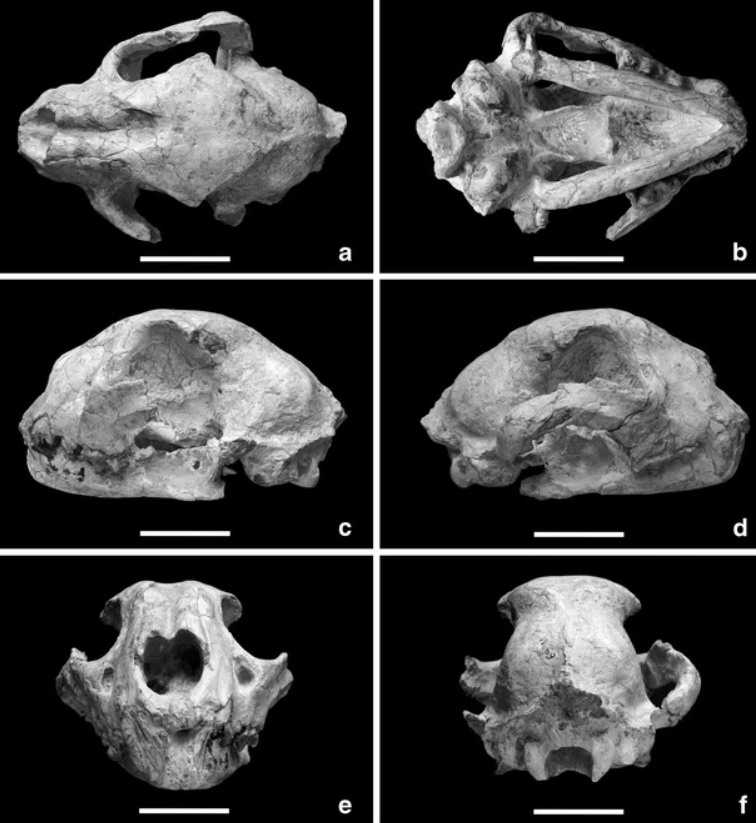Cat Facts: A cat named Yoshi
Did you know that there’s an extinct genus of sabre-toothed cat called Yoshi? Originally described as Machairodus from a Greek specimen in 1862 by Hensel, it was later moved into the genus Pikermia, then back into Machairodus. In 2015, Spassov and Geraads erected the new genus Yoshi, with the following diagnosis:
A felid intermediate in size between a lynx, Lynx Kerr, 1772, and a cheetah, Acinonyx Brookes, 1828. The skull is short, wide (rather cat-like in proportions), with a broad frontal area and a deep face; profile vaulted to strongly vaulted in the frontal region; rostral part short and broad; zygomatic processes of the frontal bones short and rounded; postorbital constriction weak, area of postorbital constriction short; frontal sinuses invading the whole bone, from the nasals to the parietals, as well as the zygomatic processes of the frontals; sagittal crest weak; median part of the nuchal crest concave in dorsal view. Upper canines short, without crenulations but with an anterior keel located mesially rather than mesio-lingually, lingual surface almost flat or slightly convex, buccal one slightly flattened to convex. P3 and p3 without distinct mesial accessory cuspid, m1 with distinct talonid. Symphysis of the mandible not elevated, without any mandibular flange.
The genus name, Yoshi comes from the name of Spassov’s “favorite cat.”
Superficially, the skull looks remarkably like that of a cheetah: cheetahs are known for their vaulted skulls, meaning they are really strongly convex on the top, or dorsal, side. See below a picture of the holotype of Yoshi garevskii from Spassov & Geraads (2015):

Spassov & Geraads did a phylogenetic analysis that recovered Yoshi as a member of the Felinae, closely related to the cheetah, but a 2022 analysis by Jiangzuo et al. recovered Yoshi as a sabre-toothed cat (Machairodontinae) within the tribe Metailurini.
Specimens assigned to the genus Yoshi have been found in South Africa, Chad, Iran, Greece, Spain, Ukraine, and China.